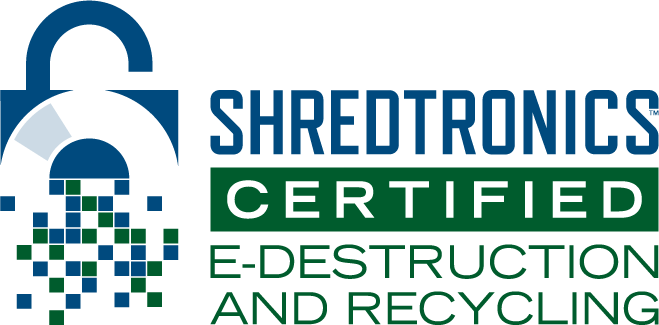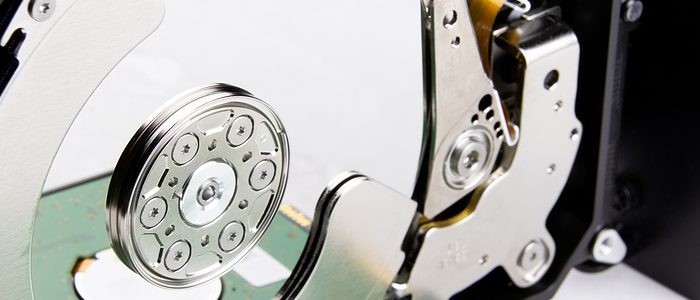
A hard drive is a high-capacity storage device used in both internal and external forms to store digital content. Over time, hard drives can fail due to age, heat, power issues, and more. When replacing your computer and hard drives, proper disposal is crucial. It can be easier said than done, so what are the best steps to destroy a hard drive?
Professional hard drive destruction ensures safety, compliance, and sustainability. With most information stored digitally, secure disposal helps prevent data breaches, which can expose confidential information and cause financial and reputational damage.
1. Assess the Data Sensitivity
- Identify the type and sensitivity of data stored on the hard drive to determine the level of destruction required.
2. Choose a Physical Destruction Method
Degaussing
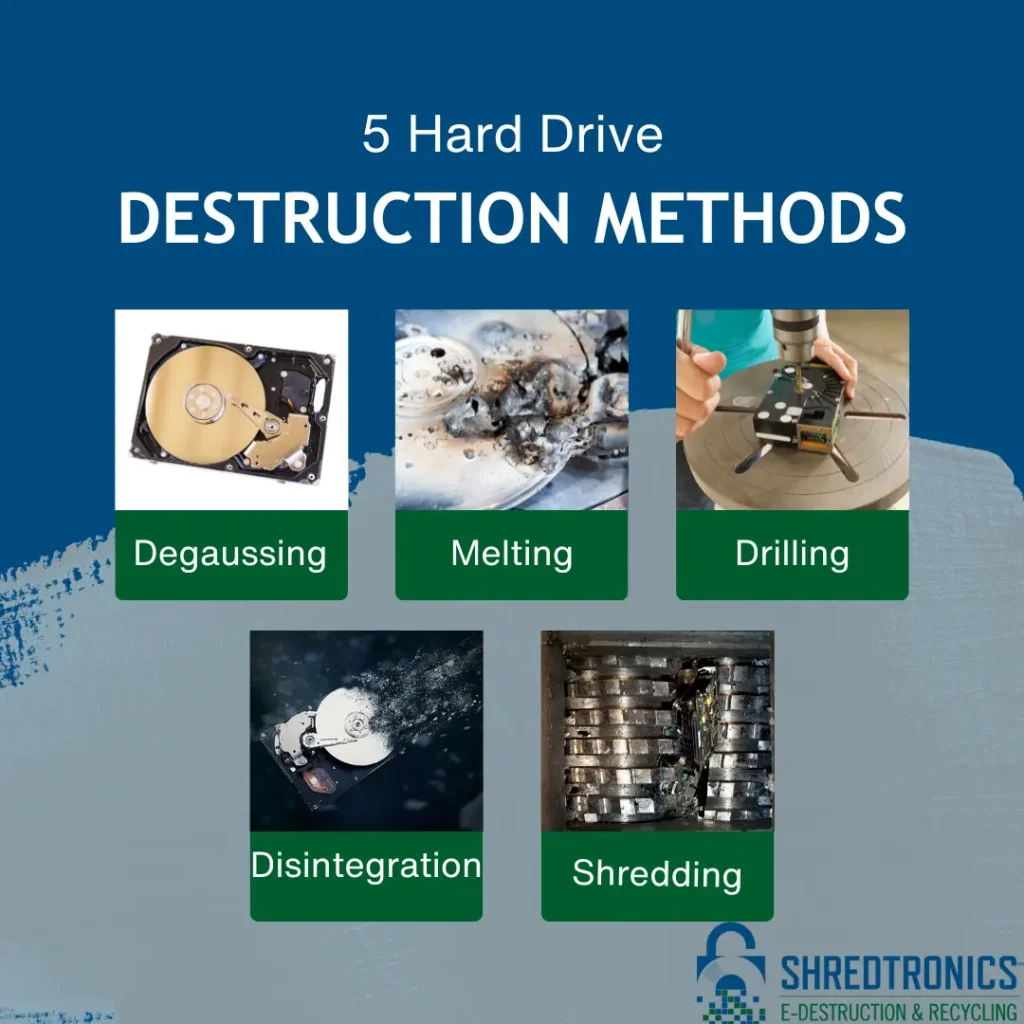
Degaussing uses a magnetic field to scramble the information stored on your hard drive. The drive’s magnetic properties are altered, changing the direction of the drive and erasing data. Degaussing cannot be completed using a regular magnet but requires a powerful device called a degausser. The machine creates a large magnetic force strong enough to destroy the hard drive.
While degaussing is mostly effective, some of your original information may remain intact. It is possible that data recovery experts could have the tools and talent required to recover your data. Degaussing is also an extensive process that may increase your costs and take more time to complete.
Melting
Melting hard drives is an effective destruction method, but it is dangerous and damaging to the environment. The process uses hydrochloric and nitric acids to melt the hard drive platters and casings. Only trained professionals with the appropriate protective gear should handle acids to avoid burns and other injuries. Chemicals should be properly disposed of to prevent environmental damage.
Please note that acid is corrosive to the eyes, skin, and mucous membranes. Improper handling can lead to coughing, inflammation, ulceration, and burns. Hydrochloric acid can also negatively affect ecosystems by increasing the acidity in the soil, making it difficult for some organisms to grow.
Drilling
Drilling is a simplistic destruction method that uses a drill, hammer, or nail gun to drive holes through the platters of your hard drive. You will need to make sure that the platter is completely penetrated with each shot or valuable data can be left behind.
Though this is an easy and inexpensive method, it is not recommended. You can be easily injured and your hard drive will inevitably end up polluting the environment in a landfill.
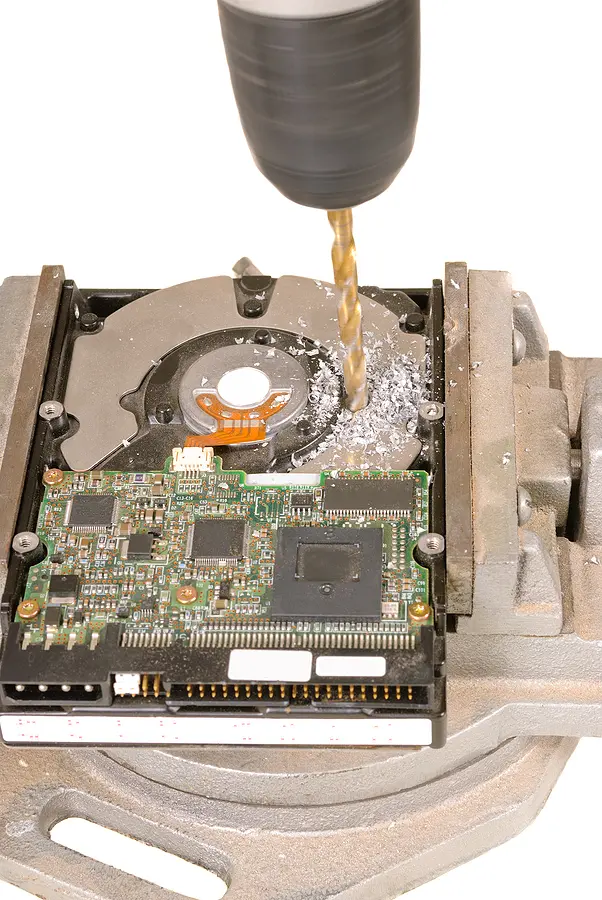
Disintegration
Disintegration is a method that uses a machine called a disintegrator to cut your hard drives into smaller pieces. The machine uses a conveyor system and knife to ensure that the pieces cannot be reassembled. This method is popular for highly confidential information but does come with some disadvantages.
Disintegrators are not suitable for use in an office environment. They need special electrical requirements and proper ventilation. To install a disintegrator, you will need federal and state approval.
Shredding
Shredding is one of the most effective destruction methods for hard drives. A specialized shredder uses 40,000 pounds of force to cut your drives into tiny pieces. Fragmenting your hard drive renders it useless and completely destroys your data.
Shredding is an accessible and affordable destruction method. It often includes recycling, helping your company maintain sustainable efforts, and reducing your carbon footprint.
4. Document
- Maintain Records: Keep detailed records of the destruction process, including dates, methods used, and personnel involved.
- Certificate of Destruction: Obtain certificates from third-party destruction services to verify compliance with data protection regulations.
5. Comply with Regulations
- Understand Laws: Familiarize yourself with relevant data protection laws and industry standards (e.g., GDPR, HIPAA) to ensure compliance.
- Follow Guidelines: Adhere to guidelines provided by organizations such as NIST, ISO, and other regulatory bodies.
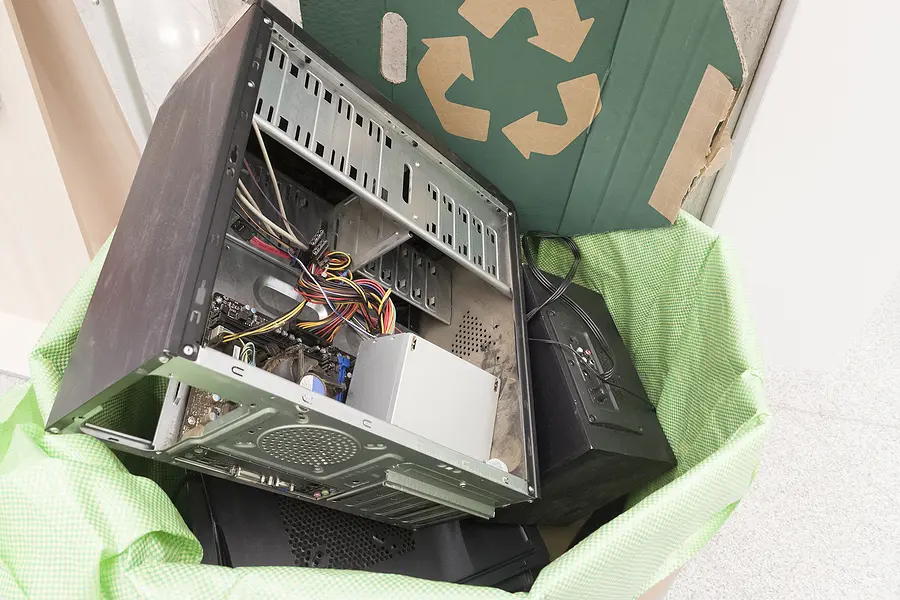
7. Environmental Considerations
- Eco-Friendly Disposal: Select methods that minimize environmental impact, such as recycling the shredded materials.
- E-Waste Regulations: Comply with local e-waste disposal regulations to prevent harmful environmental effects.
Destroy Your Hard Drives with Shred Nations Today
Shred Nations partners with hard drive destruction experts across the country to make it easy to find services near you. We have served businesses in every industry and of all sizes. Give us a call at (800) 747-3365 or fill out the form to connect with providers in your area. We will send you free, no-obligation price quotes within minutes.
